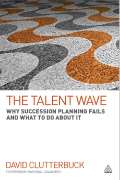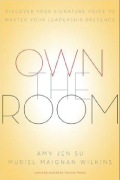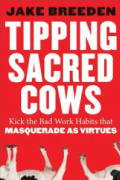TD Magazine Article
Sea Change Needed in Succession Planning
A review of The Talent Wave: Why Succession Planning Fails and What to Do About It by David Clutterbuck
Sat Jun 08 2013
The Talent Wave: Why Succession Planning Fails and What to Do About It

By David Clutterbuck
Kogan Page, 256 pp., $39.95
Most organizations today experience limited success with their succession planning efforts. Why?
Clutterbuck points out that they engage in an annual frenzy of box-checking, form-completing, one-size-fits-all succession planning activities. Policies and processes are imposed in a rigid and controlled manner with little input from stakeholders.
The author says this selective inbreeding overlooks the fact that talent development and succession planning are complex, adaptive systems.
Talent "wave" (as opposed to talent "pool") represents the complexity and dynamism of what a succession planning process should be. Clutterbuck stresses that succession planning is something done with people, not to them.
They should be supported and enabled to excel, and be invited into open, continuous career conversations. The synergy, adaptation, and ebb-and-flow motion help shape and reshape their career plans to align with organizational aspirations, according to Clutterbuck.
When talented people are given the responsibility for their own succession and career planning, HR's role is to help promote and enable conversations to take place, Clutterbuck explains. Attention is placed on coaching, mentoring, and building wider audiences in performance feedback systems.
In addition, by investigating the usefulness of social networking in succession planning, HR would be encouraging employees to build on the energy and creativity of other people. Line managers, peers within the team, peers across the organization, higher levels of management, customers, suppliers, and direct reports, as well as peers outside of the organization, all would be encouraged to contribute to the process.
The author concludes by saying that HR should surf on top of the talent wave, keeping management informed about where the wave is going and what it is capable of achieving.
"HR should live with the uncertainty and enjoy the thrill of surfing the Talent Wave," Clutterbuck writes.
Although this book has a "ho-hum" appearance and goes off on tangents in spots, it is definitely worth the time you have to read it. It is an exercise in critical thinking for human resource professionals, organizational managers, and employees.
The real-life case studies, plus the practical examples, convinced me that Clutterbuck is spot-on. I am sure the author realizes, however, that getting from here to there in many organizations will take a sea change.
Own the Room: Discover Your Signature Voice to Master Your Leadership Presence

By Amy Jen Su and Muriel Maignan Wilkins
Harvard Business Review, 240 pp., $25
This book details how to develop "your signature voice"—the leadership presence to succeed in positions of increasing responsibility. The authors note that skills that have helped you shine to date do not necessarily work as you move up the ladder. Own the Room outlines a three-step ACE model that provides practical tips for developing an authentic leadership presence: assumptions, which need to balance distinguishing self and considering others; communications skills, including the need for framing and listening; and energy, which addresses the physical aspects of presence. This resource is filled with helpful examples, case studies, and exercises for hands-on practice.
Personality Power: Discover Your Unique Profile—and Unlock Your Potential for Breakthrough Success

By Shoya Zichy with Ann Bidou
AMACOM, 288 pp., $16.95
This book assesses and categorizes personality based on four colors, and assigns each person a primary and secondary designation, along with a test for introversion or extroversion, to create a unique and blended profile. Golds (46 percent of the population) are grounded, realistic, and accountable. Reds (27 percent of the population) are action-oriented, spontaneous, and focused on "now." Greens (17 percent of the population) are creative, empathetic, and humanistic. Blues (10 percent of the population) are theoretical, competitive, and always driven to acquire more knowledge and competence. Each color combination is explored throughout the chapters, with a description of communication style, personality blind spots, and tips for dealing with conflict.
Tipping Sacred Cows: Kick the Bad Work Habits that Masquerade as Virtues

By Jake Breeden
Jossey-Bass, 224 pp., $25.95
Breeden explains how leaders and employees alike can overcome behaviors that often are recognized as a benefit. Drawing on the latest research from behavioral economics, neuroscience, and psychology, the author makes readers aware of seven of the most common sacred cows: balance, collaboration, creativity, excellence, fairness, passion, and preparation. By understanding the negative side of these behaviors, leaders and employees can understand where pitfalls lie and recognize how to avoid them.
What's on Laurie Bassi's Bookshelf?
Offshoring of American Jobs: What Response from U.S. Economic Policy? by Jagdish N. Bhagwati and Alan S. Blinder. Two brilliant economists lucidly summarize their opposing points of view on the consequences of and responses to offshoring. An important book for business leaders, parents, and wage earners (current and prospective).
A Failure of Capitalism: The Crisis of '08 and the Descent into Depression by Richard A. Posner. A surprising perspective from one of the most famous conservative thinkers of our time on the forces behind the Great Recession and what we must do to prevent a reoccurrence.
Drive: The Surprising Truth About What Motivates Us by Daniel H. Pink. A radical rethinking of what it takes to motivate people (it's not money) in a knowledge-based economy.
You've Reached ATD Member-only Content
Become an ATD member to continue
Already a member?Sign In
